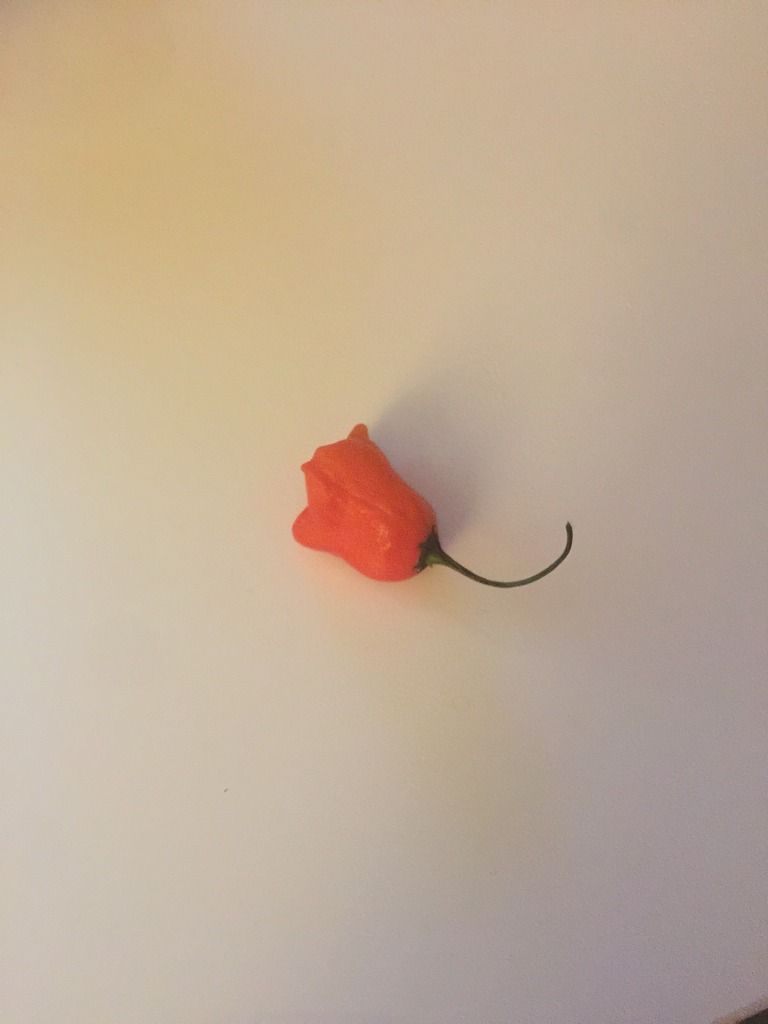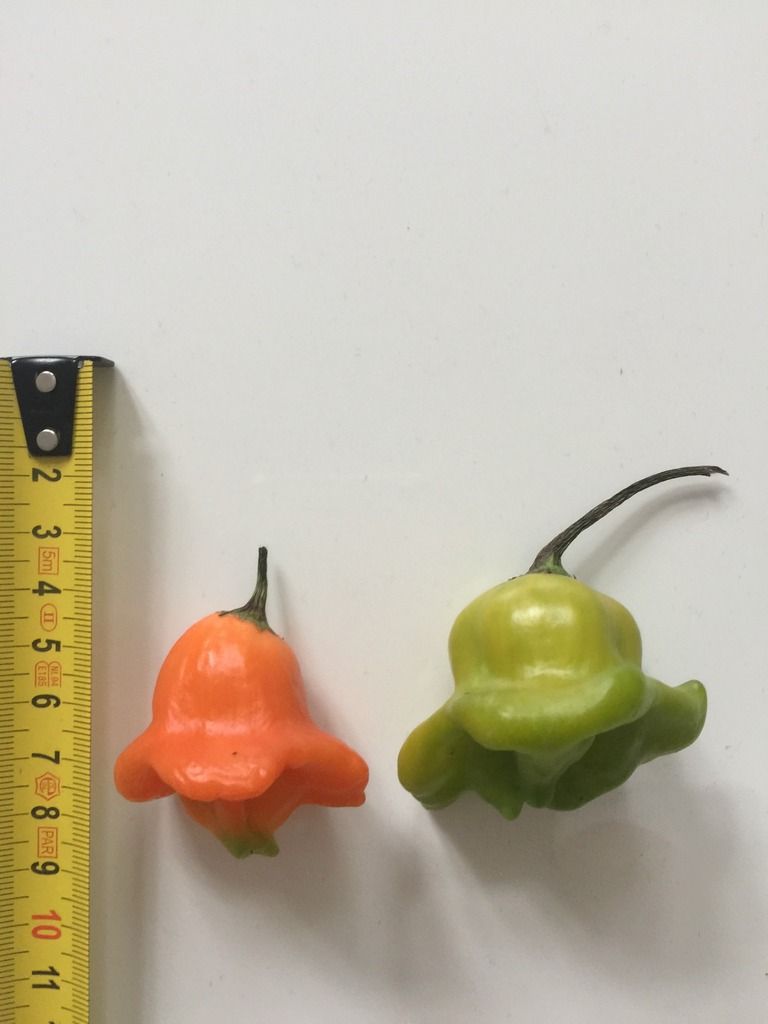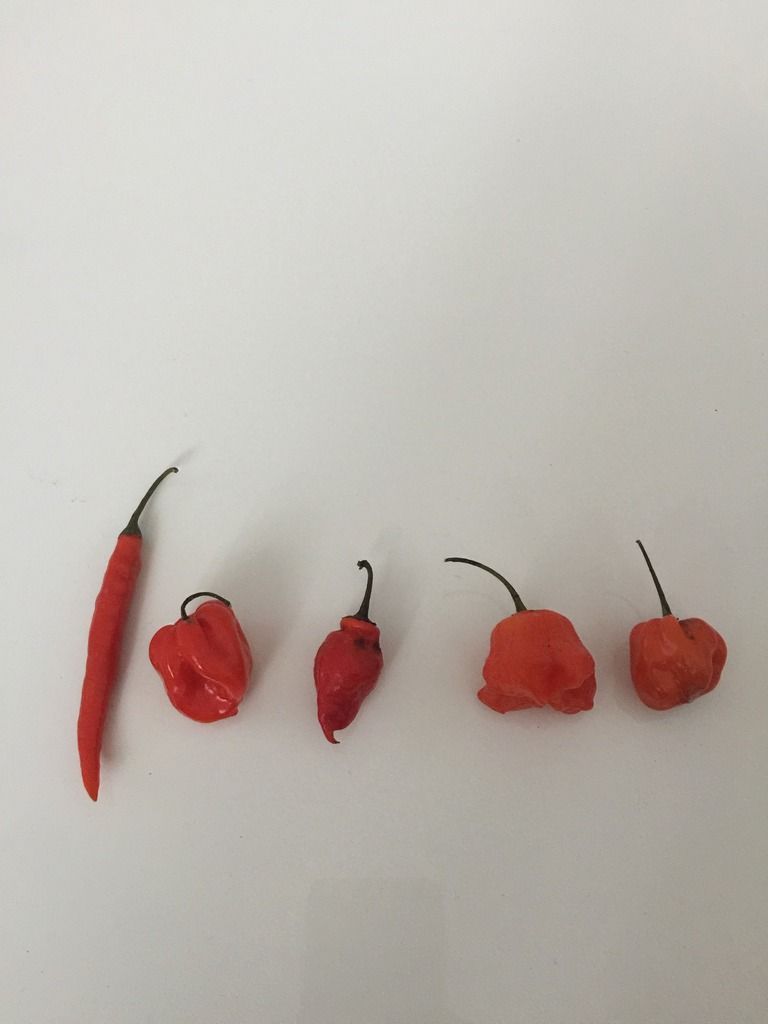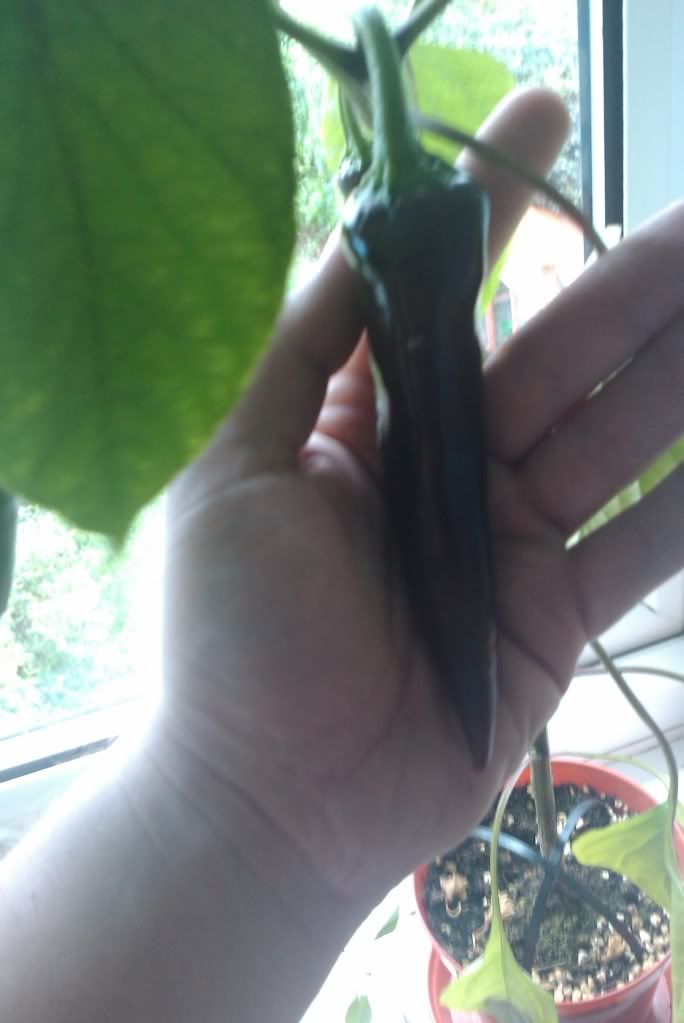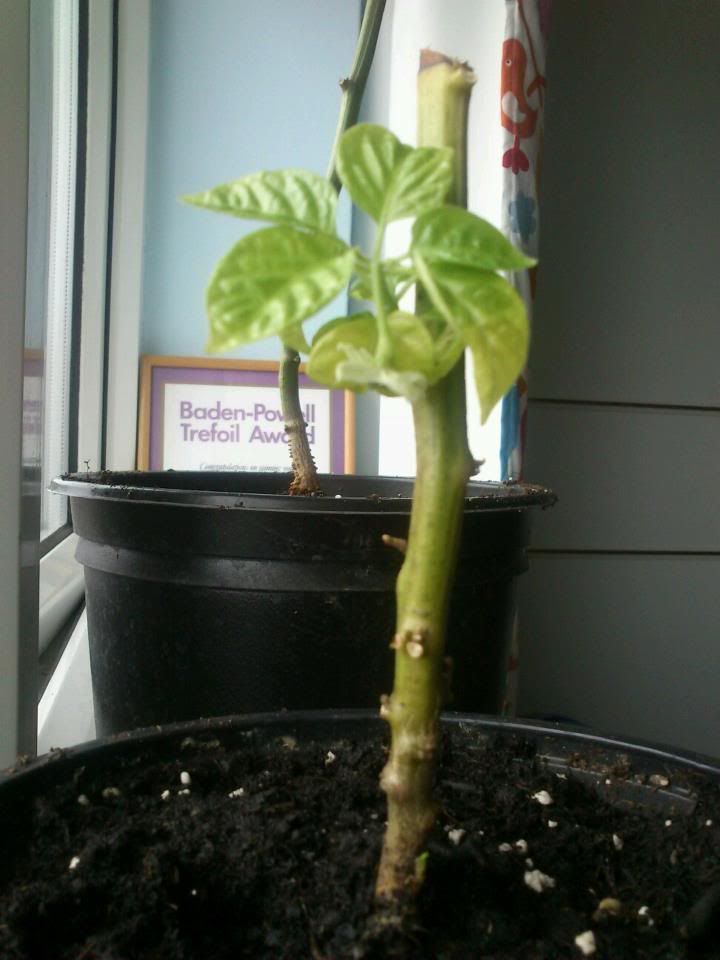Home › Forums › Chat Forum › What type of chilli is this?
- This topic has 60 replies, 26 voices, and was last updated 8 years ago by slimjim78.
-
What type of chilli is this?
-
bearnecessitiesFull MemberPosted 8 years ago
It’s a nagasai death chilli, sorry.
Can I have your
bikeswishing well?ioloFree MemberPosted 8 years agoThanks. Just learnt a very valuable lesson – try a little before chopping 2 up and eat raw in a cheese sandwich. 😳
I just hope it doesn’t burn so much on the way out.johnnersFree MemberPosted 8 years agoDoesn’t look like a Scotch Bonnet to me, but they can be pretty randomly shaped so f knows.
2 mystery chillis chopped raw into a sandwich is a bold move though, I salute you!
zinaruFree MemberPosted 8 years agolooks like a scotch bonnet to me. the ones ive had tend to be quite moist when you chop them up.
DracFull MemberPosted 8 years agoI just hope it doesn’t burn so much on the way out.
No, it’s worse.
ocriderFull MemberPosted 8 years agoThere’s no reference for sizing the thing, but it looks tiny. Isn’t it too small to be a scotch bonnet?
MrOvershootFull MemberPosted 8 years agojohnners – Member
2 mystery chillis chopped raw into a sandwich is a bold move though, I salute you!I like spicy food but as you say that’s a brave step.
I bet he’s the bloke on a ride that launches off a big drop without looking first 😀
sirromjFull MemberPosted 8 years agoFirst thing it Looks like to me is a bishops crown chilli. The ones I grew weren’t very hot and were quite sweet with a bit of an apple flavor iirc.
slimjim78Free MemberPosted 8 years agohttp://www.worldshottestgarlicpepper.com/bishops-crown-pepper.php
Same species as Pepperdew. Hardly a pant ruiner at 30,000 scovilles but a satisfying tang none-the-less.
Yours could potentially be a derivative of this pepper, but unlikely to to be a super spicy one. Keep trying them and you’ll start to become accustomed to the level of heat.
FWIW Lemon Drop gets my vote for most delicious chilli (ajii variety). Proper citrus flavour that improves any salsa
johnnersFree MemberPosted 8 years agoThey’re very pretty, I still wouldn’t have chopped 2 into a sandwich though.
First thing it Looks like to me is a bishops crown chilli. The ones I grew weren’t very hot and were quite sweet with a bit of an apple flavor iirc.
It looks like Chapeau de Frade to me (I’m no expert but I’ve been googling). If you’re talking about the same chili it’s supposed to be over 30000 Scoville, so very hot IMO but depends on habituation.
edit: just looked up equivalents to 30,000, it’s well below Scotch bonnet so I’d revise my subjective opinion to “fairly hot”. SB is where the fun starts to go out of it for me!
aphex_2kFree MemberPosted 8 years agoMiddle one in that pic could be a scorpion variant
I’ve got butch t scorps and cardi scorps. Some “next level” heat. Not even funny how hot the butch t’s are.
My faves are either my Thai or Peri Peri. Can’t wait as summer’s on the way and they’re coming back to life.
aphex_2kFree MemberPosted 8 years agoAnd yes dry them and collect the seeds.
I had a stack of red chillis that I dried and made my own chilli flakes with. SOOOOO nice on a pizza just sprinkle some on…. Lush!
DracFull MemberPosted 8 years agoThey’re hard to tell apart as so many look similar.
L to R
Thai, Habanero, Goat or Bhut, Scotch Bonnet, possibly another Hananero.
Can you not ask your neighbour?
ioloFree MemberPosted 8 years agoI already asked her. She has no idea. She’s 87. Her husband loved to grow them. He’s dead now but she loves to have the plants around to remind her of him. She hates the taste hence giving me a big bowl full.
schrickvr6Free MemberPosted 8 years agoThe first looks like a Jamaican Bell to me, one of my favourites.
ioloFree MemberPosted 8 years agoI paid her with Gin and tonic in my garden. She was vey happy with that deal.
MrOvershootFull MemberPosted 8 years agoiolo – Member
I paid her with Gin and tonic in my garden. She was vey happy with that deal.
From this we can deduce you are a nice person.
Never mind all this Brexit rubbish, this is what we should be doing as a nation, sharing with each other no matter where we were born.
slimjim78Free MemberPosted 8 years ago2nd from right looks like a naga. Nice variety of angry looking chillis there, almost all of them guaranteed to ruin your ring.
Quarrel has listed the infamous Percy chilli. Bred by a priest IIRC.. dirty buggers.
mogrimFull MemberPosted 8 years agoThe first ones look like piri-piri chillies, well worth using for piri piri chicken.
maccruiskeenFull MemberPosted 8 years agoCan I dry them and use the seeds to grow next year?
Yes. But if they’ve been grown from plants kept in the same room then you’ll probably get a random hybrid rather than more of the same chilli you planted
slimjim78Free MemberPosted 8 years agoFWIW – I have a fairly large collection of seeds, rare varieties, super hot etc, if anyone is interested in growing something different?
One of the chili forums I used to visit have a seed sharing bundle, which gets posted around the country and taken from/added to.
With basic care you can get great results from growing within the UK. The eye (and ring) opener for me was learning about the fantastic and varying flavours and levels of heat available.
CougarFull MemberPosted 8 years agoI’d love to have a go, are they particularly difficult to grow? I come from a family of farmers, gardeners and the like, but the green finger gene passed me by.
duckmanFull MemberPosted 8 years agoIf you are going to eat all those, maybe Google the picolax thread for some coping strategies?
CougarFull MemberPosted 8 years agoDead easy they warmth and they grow happily on a window sill.
Warm window sill? That might be difficult…!
slimjim78Free MemberPosted 8 years agoA few days in an airing cupboard will get the seeds germinated (typically 80-90% of seeds I start with tend to germinate – using a simple propagation kit from garden center – although you could easily use a few yoghurt pots/drinks bottles and bodge your own), then as above, pot individually in 4″ pots and they are quite happy on a sunny windowsill.
When they reach a good height (around 8″-10″ or so), switch them into 6-8″ pots to prevent them becoming root bound.
They prefer to be well watered, but also well drained, after a day or two the leaves tend to tell you if they are happy or not – if they show any signs of drooping just feed them some room temp water and within minutes they pep-up and look happy as larry again. They tend to respond well to this cycle of running dry before watering and will reward you with angrier chili’s
A weekly weak tomato plant feed when in vegetative state and a bit of pruning in early stages to promote bushier growth is all the care that’s needed really.
Leggier varieties (like the Lemon Drop I mentioned earlier) may require support but the shorter bushier varieties just go about their business.
Plant in Feb, and by July/Aug you should have a bumper crop.
Also as mentioned above, they will cross pollinate like crazy, so if you grow different varieties in close proximity, the resulting seeds will most likely be a true Heinz 57.
You WILL end up with more chilis than you can eat. Which makes a perfect excuse to make a huge batch of chili chutney and store away for rainy days. Chili Oil is also fairly easy to produce, or you can blend and freeze chilis and just pop them straight into your cooking from frozen.
You can also ‘winter’ your chili plants after their first crop – by essentially cutting them right back to the first branch, and trimming the root ball to the size of a tennis ball. This stimulate another growth season, although normally not quite as abundant in fruit (see last pic for first new growth after winterising)
CougarFull MemberPosted 8 years agoThey prefer to be well watered, but also well drained,
So standing the pots in a saucer and filling it when it’s empty from the bottom is a really bad idea I suppose? Good to know, cos that’s what I’d have done.
You WILL end up with more chilis than you can eat.
In the unlikely event that that’s the case, I don’t doubt I can palm off fruits to friends and co-workers.
The topic ‘What type of chilli is this?’ is closed to new replies.

